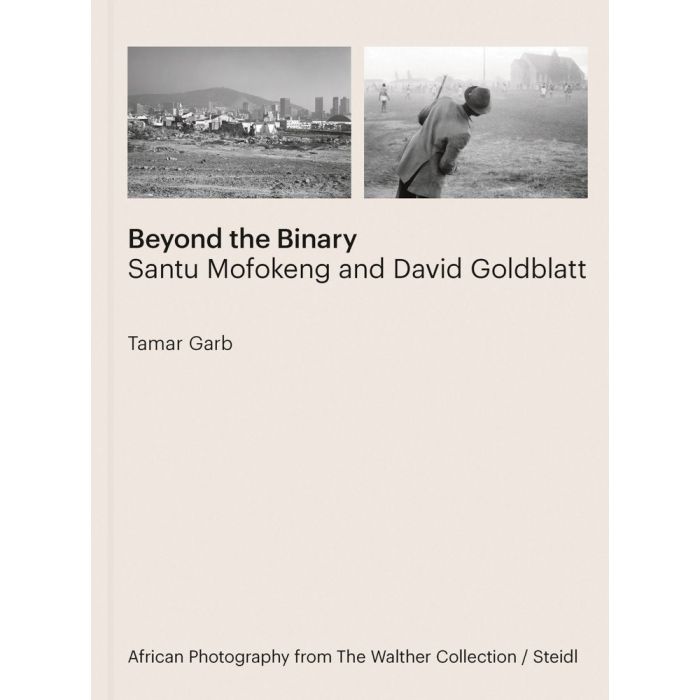My Cart
Your cart is empty
Looks like you haven't made your choice yet.
- Subtotal
Beyond the Binary: Santu Mofokeng and David Goldblatt

African Photography from The Walther Collection
- Steidl
- by Santu Mofokeng, David Goldblatt, Tamar Garb, Artur Walther
More Information
| Publisher | Steidl |
|---|---|
| ISBN | 9783969992586 |
| Author(s) | by Santu Mofokeng, David Goldblatt, Tamar Garb, Artur Walther |
| Publication date | December 2024 |
| Edition | Hardback |
| Dimensions | 230 x 170 mm |
| Illustrations | 18 col.ill. | 226 bw.ill. |
| Pages | 192 |
| Language(s) | English ed. |
Description
A thematic reassessment of the work of two influential South African photographers.
This is the second publication in The Walther Collection Books series at Steidl, focusing on a dialogue between two of the most important South African photographers of the twentieth century-David Goldblatt (1930-2018) and Santu Mofokeng (1956-2020). There are both profound similarities and differences between the two artists' work.
Goldblatt documented the ways in which architecture and spatial planning reflect the ideology of apartheid, and how the land continues to bear its legacy in post-apartheid South Africa. His investigations explore both actual structures and how mental constructs reveal how ideology has shaped our landscape.
Mofokeng's photo essays shed light on everyday life in South Africa, beyond the stereo- typical news pictures of Soweto depicting violence or poverty. Deeply personal, they record communities in townships and rural areas, religious rituals and landscapes imbued not only with historical significance but spiritual meaning, memory and trauma.
The approach of Tamar Garb in Beyond the Binary is both daring and inquisitive-she "scrambles" and reassembles Mofokeng's and Goldblatt's photographs, blurring the boundaries between them and creates juxtapositions and insights that challenge prevailing views of these established images.
By delineating 15 viewpoints around the themes of "Earthscapes," "Edifices," and "Sociality," Garb decontextualizes the work and creates a platform for comparing and rethinking the artists' practices.

Beyond the Binary: Santu Mofokeng and David Goldblatt
